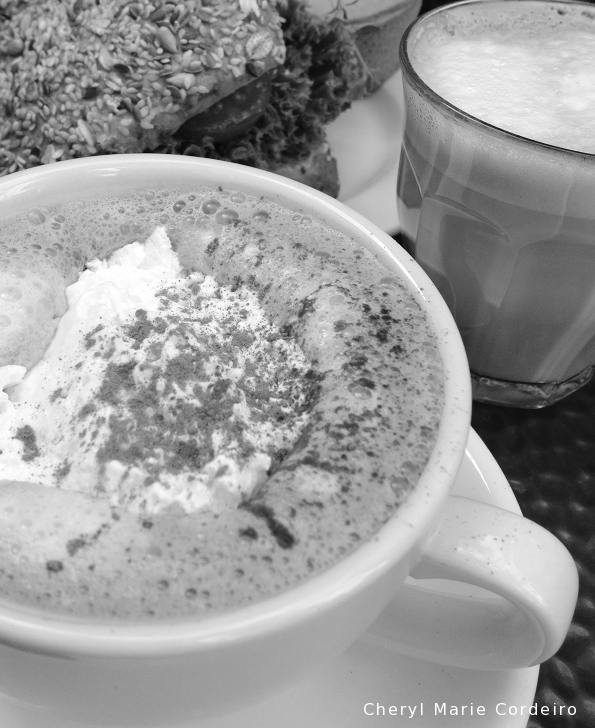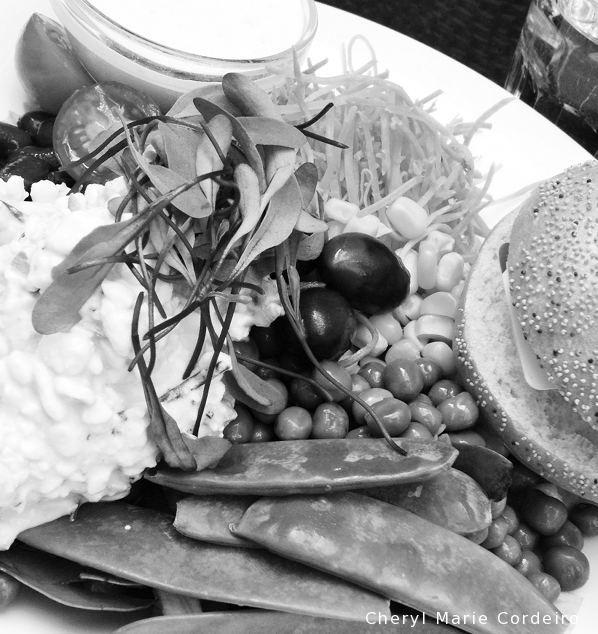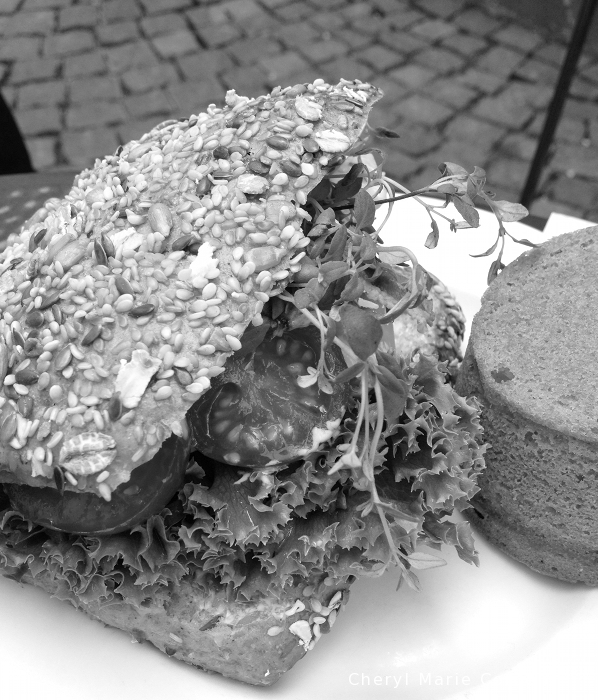
Hot chocolate, at Ahlströms konditori, Swedish west coast, Gothenburg.
Text & Photo © JE Nilsson, CM Cordeiro 2014
In the past week, a conversation in a restaurant at Haga, between myself and a restaurant steward, after lunch when I was looking for cookies to go with my coffee:
” – Yes, can I help you? You’re looking for something?”
” – Yes, do you happen to have cookies to go with the coffee?”
” – Only on Fridays, sorry. But you can walk over to Jacobs. They have cookies and dessert in general. We don’t.”
Two things struck me when I first arrived in Gothenburg about the cityscape in the early 2000s. The first was how lacking in skyscrapers the city of Gothenburg was, and the second, much due to the first, you apparently needed to walk for miles to get to where you wanted.
Having grown up in Singapore where most everything is in close quarters – best is get your neighbour to bake and deliver you that favourite chocolate cake of yours in spirit kampong-kampong – else you disregard the traffic congestion and drive to your destination, and where a three minute walk to the bus-stop is considered ”really far from the house leh”, my initial walkabout hunts for a good piece of chocolate cake or a cup of hot chocolate in Gothenburg brought more anxiety than pleasure, ”What do you mean you have chocolate cake but no hot chocolate? And the closest hot chocolate is three blocks down?! Can you not try to dissolve that piece of cake in hot milk and serve up hot chocolate instead?”

At Ahlström’s konditori.
As Gothenburg is turning towards service oriented businesses and positioning itself as a city of events in the tourism industry in its beyond 2020 vision, I began reading some about research done on tourism and tourist experiences. I smiled when reading the familiar context of ”there [exists] a multitude of various connotations and meanings of the concept of experience, resulting as it is in a certain confusion concerning the concept of experience in general and maybe in particular concerning the concept of the tourist experience. We believe that one source of this confusion could be a lack of methodological unity between the various social sciences, a fact that is very evident within our field (tourism research). Actually, there is no unity, and no agreement as to what the ideal for methodological refinement should be within this sector of academia.” The editorial continues, ”this area has no unitary substance (content). Quite on the contrary, tourism studies are very broad in scope, and there seems to be little, if indeed any agreement, on what the content of tourism studies should be.” (Larsen and Mossberg 2007:3)
Well, I can certainly see their point of research difficulty regardless of methodological unity, if for example, what you have right now seems to be a disaggregation of services (data collection might need further calibration in relation to method) where you need to have lunch at one place and go to another for dessert.

Within the scholastic circle, it has been argued that what tourists want to experience is ’existential authenticity’ (Wang 2000, Rickly-Boyd 2013). Yet much of this feeling is created by the individual themselves, who may or may not feel authenticity of experience as a function of engaging in activities outside of their ordinary routines. The act of Being is intricately tied to the individual’s capacity to act in relation to and engage in their physical, social and cultural surroundings, in dialogic with their individual subjectivities (Malpas 1999). If anything, the very act of traveling and touristing is to realize that there are many ’relative truths’ and what seems ’absolute’ in one place has little or no relevance in another. And it is perhaps this experience of having to learn, un-learn and/or re-learn things that makes for the experience of existential authenticity when visiting new places.
After about a decade of walkabouts in search of that perfect hot chocolate, I found myself in the past week, sitting at Ahlströms konditori. Located across the canal from the original Swedish East India Company building from the 1700s, it is a café that started operations from 1901. Today, it serves a variety of breakfast sandwiches, traditional Swedish desserts and yes, hot chocolate. Its treasure of place is its inner courtyard for outdoor summer dining, accessible through cobblestoned streets too narrow for a single horse carriage to pass.

Fralla
It was here that I marveled at how this café seemed to continue to thrive against a backdrop of the changing landscape of the city, and saw in this context, the creative possibilities of providing socio-cultural and historical familiarity to the locals combined with a space that can create this existential authenticity of experience for visitors. A case of illustration that existential authenticity is not created in isolation within the individual, but occurs in combined ”fleeting moments, informed by social, cultural, and physical encounters.” (Rickly-Boyd 2013:684)
”’Since both tourism and pilgrimage are spatial activities, the physical dimension of the toured destination plays an important role that cannot be abandoned in conceptualizations of tourists’ experiences, including their experiences of existential authenticity.’ Indeed, as more recent research concerning existential authenticity illustrates, place matters in tourism experiences.” (Belhassen et al. 2008 in Ricky-Boyd 2013:684)
As a matter of influence of people and place in co-creation of environments and experiences, true to Swedish individuality and autonomy of actions, what I’ve found to be a disaggregation of services could well be the evolution of a new landscape of emerging services, operating in conglomerate fashion across the city as one larger fabric of services industry.
The (initially coerced) walkabouts in the city on the hunt for my favourite cup of hot chocolate served the function of helping me reconceptualise the normative. They are learning experiences that constantly engage me in mapping old onto new and vice versa. Today, I could well share that I’m grateful for the lack of skyscrapers in the city skyline, and the increasing specialisation of services makes for some creative exploration of the soft cobblestoned streets of Gothenburg,
”Yes, but Jacobs is just across the street. Are there any cafés in the surrounding quarter that you’d recommend I go find my dessert?”
References
Larsen, S. / Mossberg, L. 2007. Editorial: The Diversity of Tourist Experiences, S. Larsen / L. Mossberg (eds). Scandinavian Journal of Hospitality and Tourism, 7(1):1-6.
Malpas, J. E. 1999. Place and Experience: A Philosophical Topography, Cambridge: Cambridge
University Press.
Rickly-Boyd, J. M. 2013. Existential Authenticity: Place Matters, Tourism Geographies: An International Journal of Tourism Space, Place and Environment, 15(4):680-686.

Wang, N. 2000. Tourism and Modernity: A Sociological Analysis, Oxford: Pergamon Press.